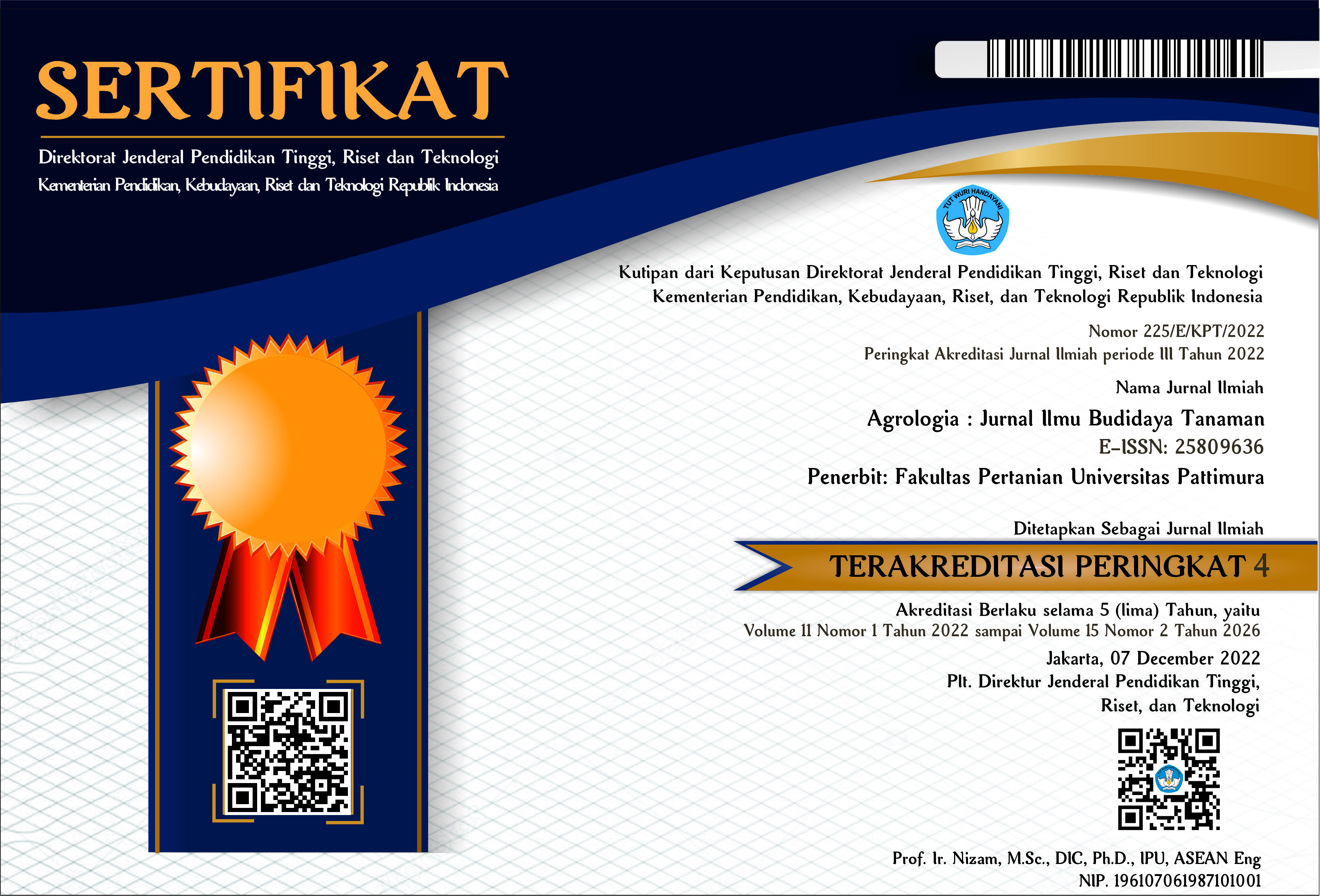Peningkatan Kandungan N Dan P Tanah Serta Hasil Padi Sawah Akibat Aplikasi Azolla pinnata Dan Pupuk Hayati Azotobacter chroococcum Dan Pseudomonas cepaceae
Abstract
This study aims was to determine the potential of water fern Azolla pinnata combined with biofertilizer (Azotobacter chroococcum N2-fixing bacteria and Pseudomonas cepaceae phosphate solublelizing bacteria) in improving N and P content of the soil, and yield of paddy rice crops. This research was conducted in lowland Sanggar Penelitian Latihan dan Pengembangan Pertanian (SPLPP), Ciparay Bandung regency. The experimental design used was randomized block design with factorial pattern that consists of two factors. The first factor that A. pinnata (A) consists of two levels, without A. pinnata and A. pinnata with as 3 tons ha-1. The second factor is the biological fertilizer (H) consists of 3 levels with doses of 0, 5, and 10 L ha-1. The results showed A. pinnata and biofertilizer do not interact to increased soil N and P, as well as lowland rice crops. However, A. pinnata independently can increase the content of available N and P soil, while the biofertilizer 10 L ha-1 is able to increase the available soil-P content compared with controls. The combination of A. pinnata and biofertilizers have not been able to increase the yield of rice significantly, but can increase the yield of rice by 16.1 % compared to the average yield of rice in paddy field locations in Ciparay Bandung regency
Full Text:
PDFDOI: http://dx.doi.org/10.30598/a.v3i1.257
Refbacks
- There are currently no refbacks.











